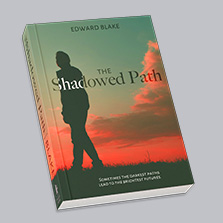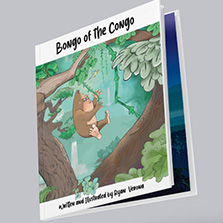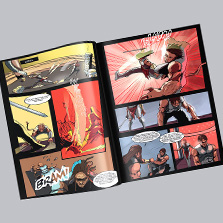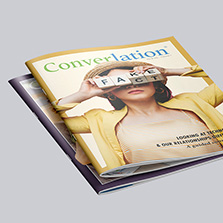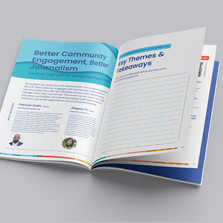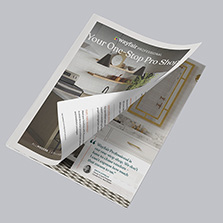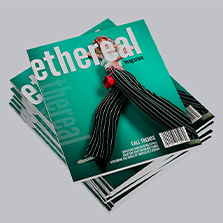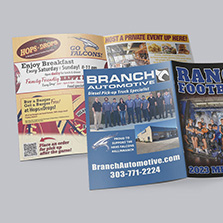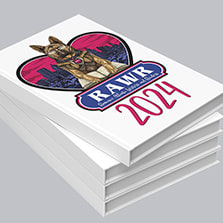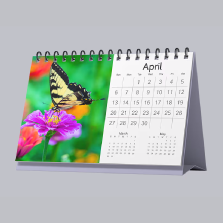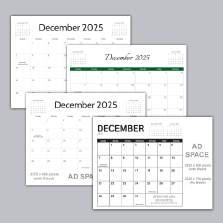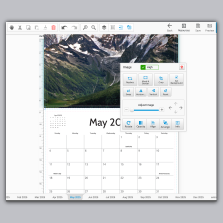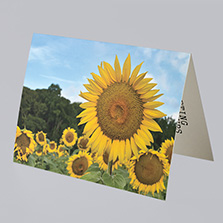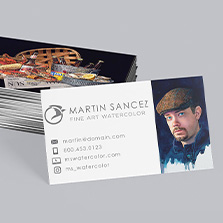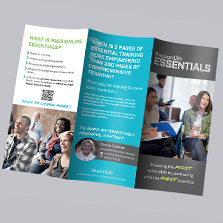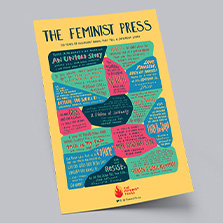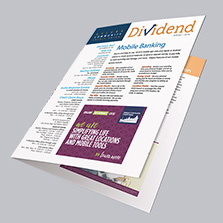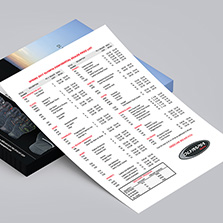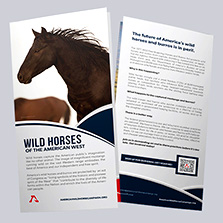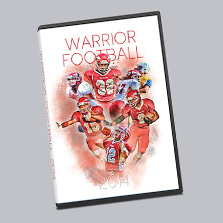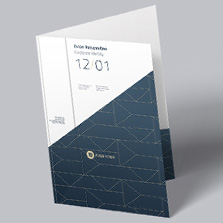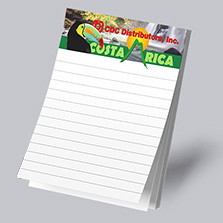
Behind the Print: Railroads, History, & Photography
In this episode of Behind the Print, we’re joined by Anthracite Railroads Historical Society Magazine Editor, Richard Jahn. With a lifelong passion for trains and railroads, Richard goes into detail about how he uses print to help preserve the historical railroads of Pennsylvania.
Below, you’ll find the transcript of our conversation, edited for clarity to ensure easy reading. If you want the full, authentic experience, make sure to check out the video attached below.
Connor: Welcome back to another episode of the Behind The Print podcast, where we highlight industry professionals and uncover the creative minds and the businesses at work inside professional printing. Our mission is to offer inspiring, actionable resources that help you elevate your projects and accelerate your path to excellence in profit and in print. Joining me today is the editor of the magazine for the Anthracite Railroads Historical Society. Richard Jahn, welcome to the podcast.
Richard: Hi, Connor.
Connor: How are you doing today?
Richard: Good. Good, good.
Connor: If you’re ready, let’s dive right in. Tell me a little about yourself and what you do.
Richard: I’m a retired oil company worker. I worked for 37 years at a Sunoco oil refinery producing gasoline. All the while, I’ve had a hobby in the printing industry going back to the 1970s, when the industry was done the old-fashioned way before computers. I’ve kept some familiarity with it all along the way.

Connor: How did you get into railroad photography?
Richard: It’s a sickness.
Connor: I love that answer.
Richard: I’ve always been fascinated with trains. My dad had trains around the Christmas tree. I went off to college and met other people who were taking pictures of real trains, and it blossomed from there. Now I have a whole network of similar people across the country and internationally. I’ve been to Australia seven times.
Connor: Really? I wouldn’t have guessed Australia had such a railroad culture compared to places like Pennsylvania. Around here, there are railroads everywhere.
Richard: There used to be. There are a lot fewer now. Many have become rails-to-trails, but yes, you know what I mean.
Connor: Have you done railroad photography in the Tyrone or Altoona areas?
Richard: Oh yeah. I went to college in Huntingdon, Pennsylvania. I spent a good amount of time in that area and still do. It’s a great place.
Connor: Altoona has a phenomenal railroad museum. I’m not sure if you’ve visited, but it’s great.
Richard: I’m associated with another railroad museum in Scranton, Pennsylvania: the Steamtown National Historic Site. It’s a national park. I actually help maintain locomotives. My club owns seven locomotives.
Connor: Seven? That’s impressive. Are these the old-fashioned steam-powered locomotives or diesel electrics?
Richard: They’re diesel-electric locomotives built in the 1940s and 1950s. They’re antiques.
Connor: I thought diesel-electrics came later, maybe mid-fifties to early sixties. I didn’t realize they went that far back.
Richard: General Motors came out with the diesel-electric locomotive that revolutionized the industry during World War II. By the end of the war, the railroads were basically worn out as far as their equipment. GM was ready to step in with this new device, the diesel locomotive. They proved more efficient and cheaper to operate, and it took off from there.
Connor: What can you tell me about the Anthracite Railroads Historical Society, its community, and your audience?
Richard: The anthracite railroads are the railroads that served Northeastern Pennsylvania, where the primary deposit of anthracite in the United States exists. There’s very little mined anywhere else, only a few other places. Back in the 1890s the rail barons made extensive investments in mining and the associated railroads in that area. I graduated from college in 1975, and a big transformation was taking place. All the anthracite railroads were being swallowed up by a new merged entity called Conrail, which the government set up to help bankrupt railroads. The time was right for me and three others to found the Anthracite Railroads Historical Society, because we wanted to preserve what history we could at that point. Here we are about 50 years later.
Connor: That’s a long time to be operating. For people unfamiliar, what is anthracite used for?
Richard: Originally it was a very clean-burning home heating fuel. Today it’s used as filter material, in some industrial applications, and in some metallurgical uses.

Connor: So it’s like coal?
Richard: It is coal. It’s hard coal. Bituminous is soft coal; anthracite is hard coal. It’s much harder.
Connor: I was looking at your Flickr profile and noticed you have multiple pictures of the same train in different locations. Do you follow trains while getting pictures?
Richard: Yes. It’s called train chasing.
Connor: I saw locations not just in Pennsylvania but across the American West and the South. What’s the most interesting place you’ve chased trains?
Richard: There are many highly scenic locations. The purpose, for me, is to make a pleasing scene. There are a lot of very nice scenes in your state in Montana. I’ve been out there and should be out there more, but it’s farther away. There are innumerable places in the Rockies and out West, and plenty on the East Coast and up in New England as well. The trick today is knowing when a train is running and when it will be in the right light at the right time in the right place.
Connor: Sounds like a whole science. How do you track train locations?
Richard: There’s a whole network of people, and there are extensive Facebook groups.
Connor: Do you have a particular model of train that’s your favorite to photograph?
Richard: The one the society owns, which is called an F unit. The models ran from FT, F2, F3, F7, to F9. They were the ones that revolutionized railroading in their day. They had a streamlined, art-deco design, and that’s what I work on and maintain. There are very few left.
Connor: How many do you think are left?
Richard: About a hundred, I guess, out of 7,000 built.
Connor: Are they operational, or just museum pieces?

Richard: Virtually none are on the regular railroad system. They’re in museums or tourist service. Some aren’t restored. The number that are fully restored and operational is significantly smaller.
Connor: At the Altoona Railroad Museum I’ve seen passenger cars sitting outside that haven’t been restored. I think they’re on the to-do list.
Richard: A lot of railroad museums have big to-do lists they don’t get to.
Connor: I think that’s true of many museums. How do you stand out from other train photographers?
Richard: I’ve been doing it for 50-plus years. I don’t think I stand out. There are professionals who invest a whole lot more time, effort, and creativity. They have books; they’re well-published. I’m not one of them. I’m more utilitarian.
Connor: Tell me about milestones that have defined your photography or the Anthracite Railroads Historical Society.
Richard: Photography is a hobby. I’ve been paid for a few photos. The best thing I do is on the print end. I see what’s missing in photographic coverage or documentation. I know what resources I have and what my network can access. I’ve put together five books.
Connor: On that note, how has print helped elevate your work?
Richard: The Anthracite Railroads Historical Society is a 501(c)(3) educational organization. We don’t make huge amounts of money. We fulfill a need for educational materials. If I can break even or make a little to fund the next project, that’s good. I don’t have a business making huge amounts of money. It’s a labor of love.
Connor: What challenges are holding you or the Society back right now?
Richard: Time. Enough time to do things. I have a number of projects I’d love to get to, but I go in many directions. I work on maintaining the locomotives every weekend. I try to publish the magazine three times a year. I have a home life. I’d like to travel. I also have a passion for saving history. There are railroad photographers who are senior to me, and there’s never a good plan for what happens to their photographic collections. Railroad photographers, in general, shot a lot of black and white and a lot of color slides. It’s not unusual to know someone with over a hundred thousand slides. I try to delve into these collections, figure out what they are, and digitize them.
Connor: I was just about to say, digitize them.
Richard: Scanning takes a huge amount of time, and that’s where my passion lies. My organization has about a thousand members, and we are always losing some. I am only one person. I can’t scan everyone’s images, yet those images are what matter for the historical publication I put out. If I don’t scan them now and the person passes away, their heirs might not care what Uncle So-and-So did with his trains. They just toss them, and it’s gone.

Connor: That’s a real shame. Let me shift gears. If you had a day completely free to spend however you’d like, how would you spend it?
Richard: In a nice scenic location on a beautiful weather day, like these September days, photographing trains either with my drone or on the ground.
Connor: I imagine you can get some great images with a drone.
Richard: It’s opened up a whole new avenue.
Connor: One last question. How can listeners get in touch or collaborate with you on a project?
Richard: The Anthracite Railroads Historical Society has a webpage, anthraciterailroads.org. There’s a contact page with a link.
Connor: Very good. Any questions for me?
Richard: I have a statement.
Connor: What’s that?
Richard: I found PrintingCenterUSA because I had been using a number of printing services that did not do landscape-format books in short runs.

Connor: Like this one.
Richard: Like that one. Exactly. I found you and have had several projects in that format through you, and hopefully several more.
Connor: We appreciate you saying that, and we appreciate you printing with us. As I was looking through your book here, it’s not just old images of trains. I’m seeing old maps. Are these originals?
Richard: Yes. As the title of that book says, it’s a scrapbook. In our Society’s archives we were donated a literal scrapbook where the man had hand-drawn all those maps. I took the scrapbook and the pictures, which were on the old black paper with the little photo corners, scanned the images, added some better images, cleaned up the maps, and laid everything out into that book format. Then we reproduced it as is. With other hand-drawn maps I might redraw them in a vector program to clean them up and make them look professional.
Connor: It looks very professional.
Richard: I did not want to do that with those particular maps because I liked the way they were. They needed just enough cleanup. I liked the appearance, which is why we still called it a scrapbook.
Connor: They turned out great.
Richard: They did. You take care of one part, and I take care of the other. It works well.
Connor: It does. That’s a wrap on another episode of Behind The Print. Thank you for joining us, and thanks to our listeners for exploring the artistry and innovation of the printing world with us. Remember, having a strong vision, building the right strategy, and using tools like print to amplify your message can make your brand stand out. If you enjoyed today’s episode, be sure to get your sample pack at PrintingCenterUSA.com and share this with your fellow business enthusiasts. Until next time, keep those creative sparks flying. There’s always more to discover behind the print.


